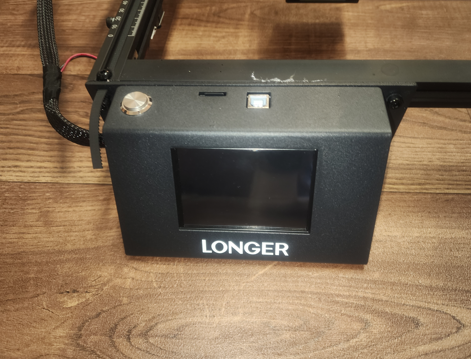Is A Laser Engraver Worth It?

When I first heard about laser engravers, I couldn't wait to create different designs on various materials. Laser engravers have become increasingly popular, not just among professionals but also hobbyists and small business owners like myself. I currently laser engrave on canvas as my main source of income. There is basically nothing that I cant find a way to laser engrave on painted canvas.
Laser engravers offer a unique blend of technology and creativity which in turn allows its users to personalize and customize items with great accuracy.
What is a laser engraver?
You can imagine you have a piece of paper in front of you. Now, think of a laser engraver as a highly precise and powerful pen. Instead of using ink like a real pen, this “pen” uses a focused beam of light to “draw/etch/engrave” on the paper.
When you turn on the laser engraver, it directs this beam of light onto the paper. The light is so intense that it can burn or cut through the paper, creating different designs, patterns, or text. You can control the laser to move in specific paths, just like you would guide a pen to write or draw. Unlike the pen however, you will use different types of software to program the path you want your laser beam to go.
Benefits of Owning a Laser Engraver
- Precision and accuracy in engraving - When I first started using a laser engraver, I was happy to see the level of precision and accuracy I can get from them. Unlike other methods, where human error can easily lead to mistakes, a laser engraver is precise down to the millimeter or even better. This means I can create designs and detailed artwork without worrying about precision. A laser engraver is my go-to now for any small design that I need to put on certain materials.
- Versatility in materials and projects | Ability to Engrave on Various Materials - One of the things I love about laser engravers is their versatility. Laser engravers can work with a wide range of materials. Some of these machines:
- Wood: Ideal for creating detailed designs on furniture, signs, and decorative items. I recently created a wooden sign for my grandparents' restaurant.
- Metal: Perfect for engraving on jewelry, tools, and industrial parts.
- Plastic: Useful for creating custom parts, signage, and promotional items.
- Glass: Useful for creating items such as gifts for weddings or any other type of party.
- Time-saving for repetitive tasks - This one is a good one. Laser engravers offer you the ability to complete repetitive tasks like etching on business cards or creating cutting boards.
- Efficiency, Speed and Ease of Use - This is coming from the time-saving aspect. Certain tasks that are repetitive is best done by a machine and a laser engraver is a great machine at completing certain tasks.
Drawbacks of Owning a Laser Engraver
- Cost: Initial Investment and Ongoing Maintenance Costs
When considering a laser engraver, it’s important to evaluate both the initial purchase price and the ongoing costs associated with maintenance and operation:
Initial Investment: Laser engravers can cost from a few hundred to several thousand dollars, depending on the type, size, and features. Entry-level models might be suitable for hobbyists, while more advanced machines are necessary for professional use.
I personally own the Longer Ray 5 20 Watt which can be purchased for around $500 today. This machine has brought plenty of smiles to my face as well as others. I remember doing a painted canvas for my dentist which he loved.
Maintenance Costs: Some maintenance is essential to keep these machines running smoothly. This includes replacing parts like laser tubes, lenses, and mirrors, which can add to the overall cost. Additionally, some machines may require periodic software updates or professional servicing.
I have owned my laser engraver for about 1 year now and have not had to repair or replace any part.
Operational Costs: Consider the cost of materials (e.g., wood, metal, plastic) and any consumables (e.g., cooling fluids, protective coatings). Electricity usage is another factor, especially for high-powered machines.
Related Articles
-
How to Laser Engrave Leather | Step-By-Step Guide
Can You Laser Engrave Leather?
How to Laser Engrave White Tiles Painted Black?
What Is The Best Low Cost Laser Engraver? My Opinion
How to Laser Engrave Acrylic with a Diode Laser: A Step-by-Step Guide
My Hands-On Review of the Monport 6-Watt Diode Laser Engraver
Laser Etching Glass
Laser Engraving A Photo | Full Guide
How Much Does Laser Engraving Cost
Is Laser Engraving Hard to Learn?
Why is laser engraving so expensive?
WHAT IS A LASER CUTTING MACHINE?
Top 7 Laser Engraving Business Ideas
10 Essential Safety Precautions for Home Laser Engraving Projects
Laser Engraving Cutting Boards | How To
Where To Buy Laser Cutting Materials?
Laser Engraving QR Codes
What Is DPI In Laser Engraving
How Much Is A Laser Engraving Machine